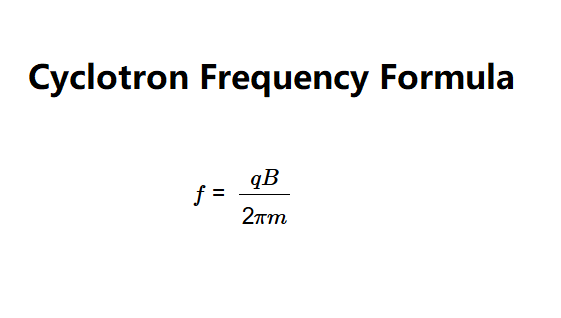 Home
Home
 Back
Back

Definition: This calculator computes the cyclotron frequency, which is the frequency at which a charged particle orbits in a uniform magnetic field due to the balance of the Lorentz force and centrifugal force.
Purpose: It is used in physics and engineering to design cyclotrons, analyze particle motion in magnetic fields, and understand phenomena in plasma physics and astrophysics.
The cyclotron frequency is calculated using:
Where:
Steps:
Details: The cyclotron frequency is fundamental in particle accelerators like cyclotrons, used in medical imaging (e.g., PET scans), and in studying charged particle behavior in magnetic fields, such as in the Earth’s magnetosphere or in fusion research.
Tips: Enter the charge (\( q \)), magnetic field (\( B \)), and mass (\( m \)) with their units. The calculator will compute the cyclotron frequency in Hz, kHz, and MHz, with 5 decimal places. If the frequency is greater than 10000 or less than 0.0001 in absolute terms, it will be displayed in scientific notation.
Examples:
Q: What is cyclotron frequency?
A: It’s the frequency at which a charged particle orbits in a uniform magnetic field, resulting from the balance of the Lorentz force and centrifugal force.
Q: Why does the equation not account for relativistic effects?
A: The formula assumes non-relativistic speeds. At high speeds, relativistic effects increase the particle’s effective mass, reducing the frequency.
Q: Why are some frequency values displayed in scientific notation?
A: Values greater than 10000 or less than 0.0001 in absolute terms (and not zero) are displayed in scientific notation for clarity.